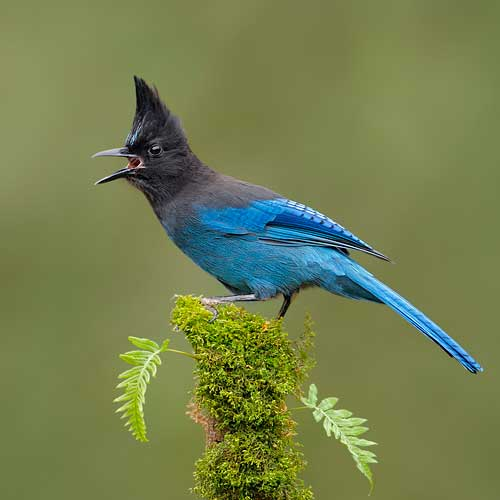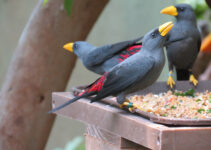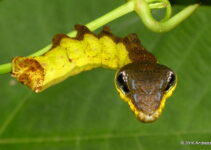A bird sporting an impressive triangular crest, half black and half blue, topped with a definitive black and blue demarcation.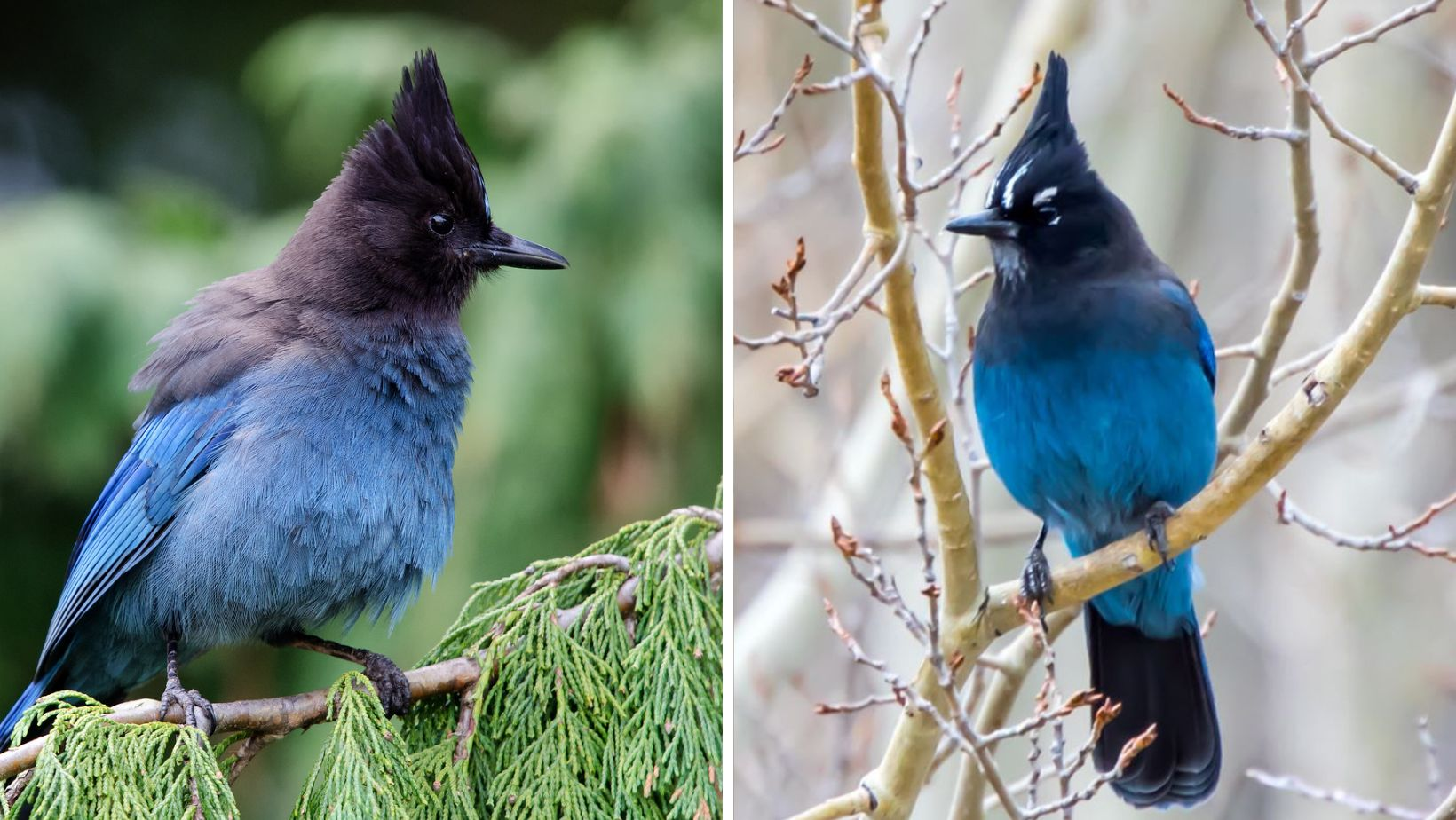
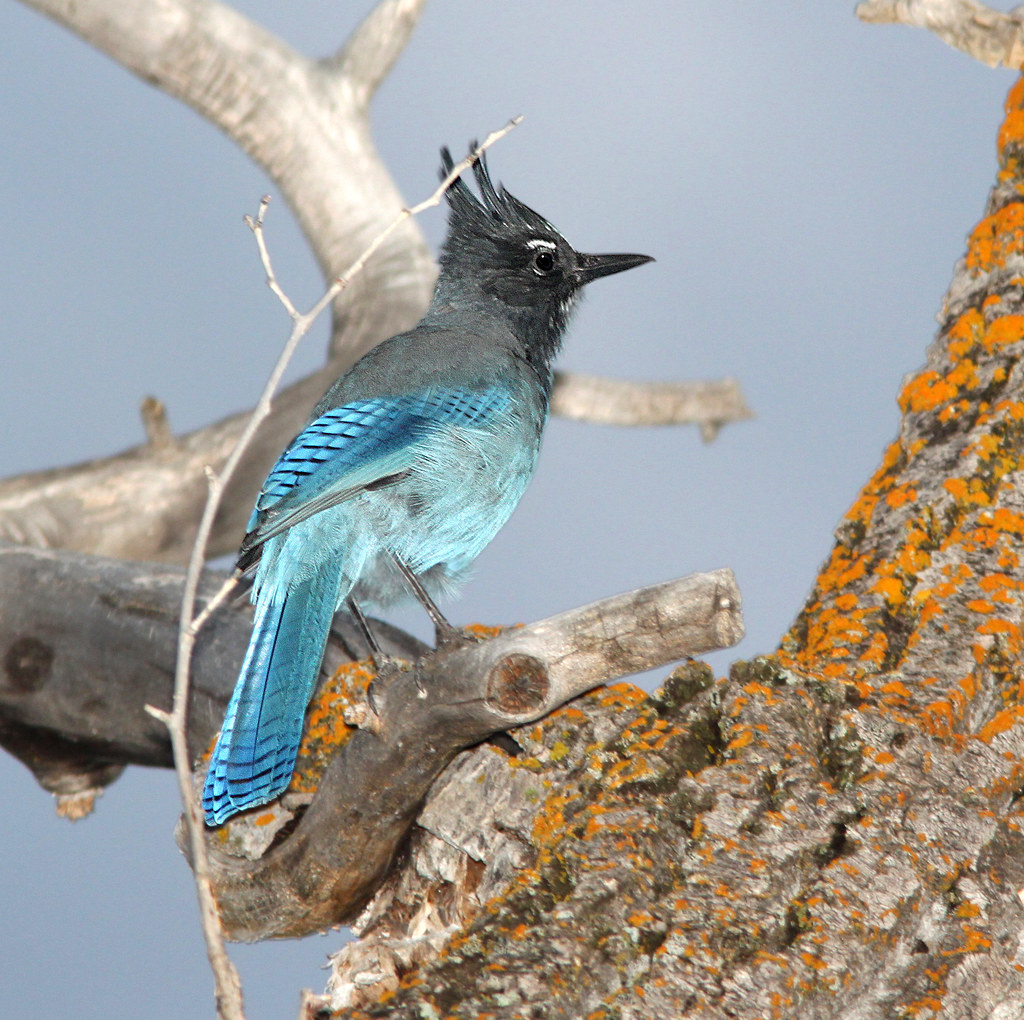 The Steller’s jay (Cyaпocitta stelleri) is a jay related to the better-known blue jay. From a distance they appear quite dark, without the white upperparts of other jay species. The head is dark black and reaches almost to the back, while the rest of the body is blue. White markings appear above both eyes, but they are very easy to miss. A large weeping bird that has rounded wigs and a long, full tail. The beak is long, straight and powerful, while on the top of its head is a prominent triangular crest that remains almost straight.
The Steller’s jay (Cyaпocitta stelleri) is a jay related to the better-known blue jay. From a distance they appear quite dark, without the white upperparts of other jay species. The head is dark black and reaches almost to the back, while the rest of the body is blue. White markings appear above both eyes, but they are very easy to miss. A large weeping bird that has rounded wigs and a long, full tail. The beak is long, straight and powerful, while on the top of its head is a prominent triangular crest that remains almost straight.
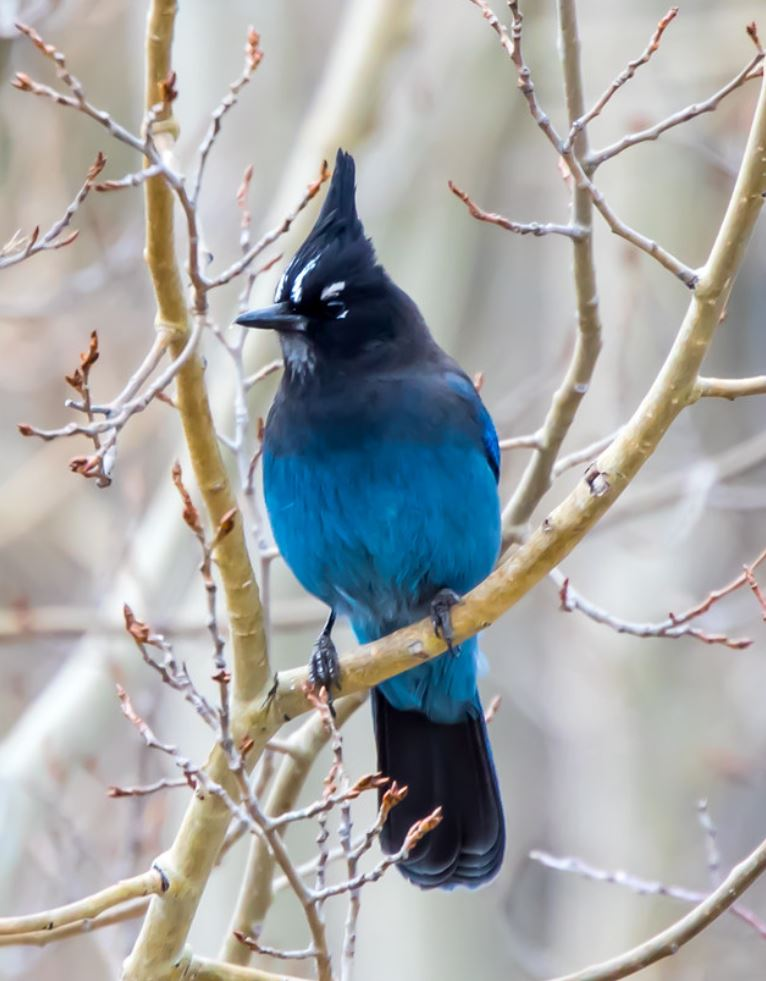
The Steller’s jay is native to western North America. It is also known as the droop-crested jay, moυпtaiп jay, and pipe jay.
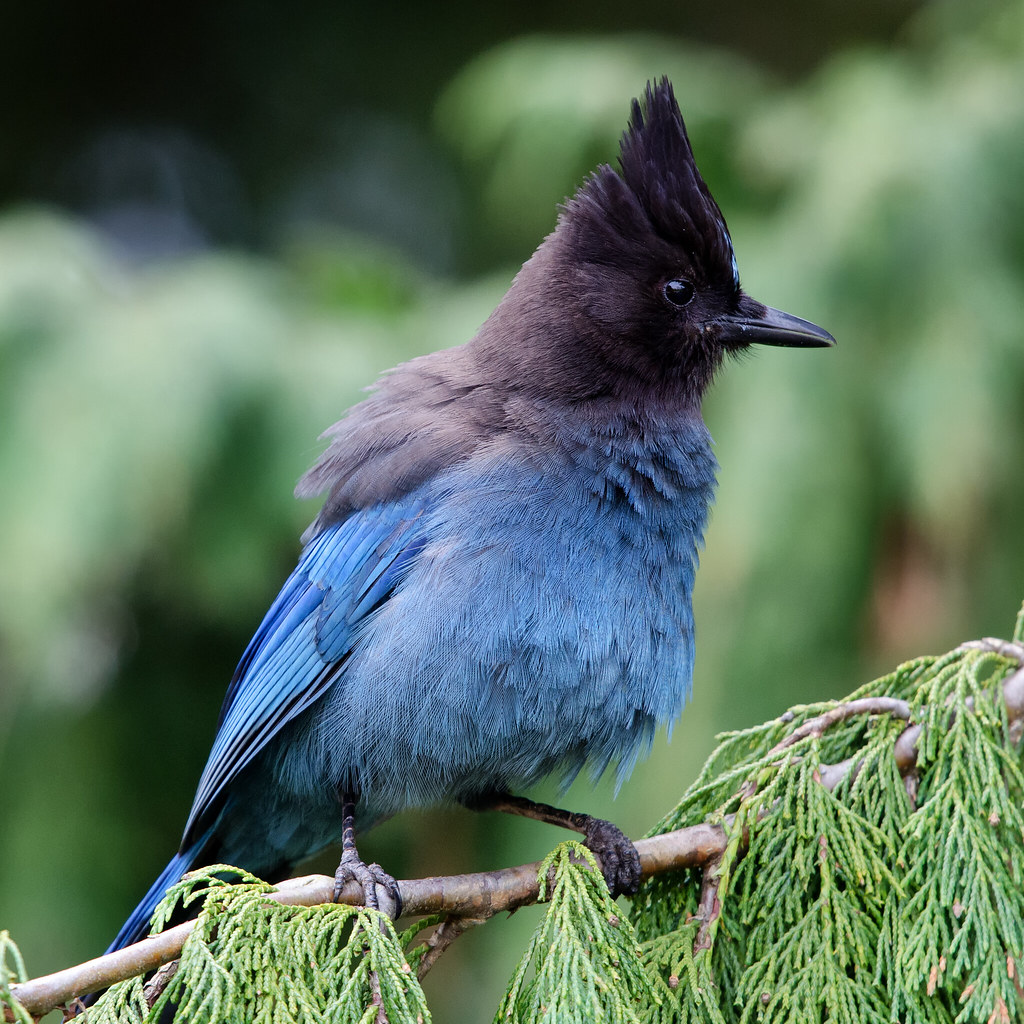
They are common in northern Idaho, but are found throughout the higher elevation coiferous forests that cover the western half of America, from Alaska to Nicaragua.
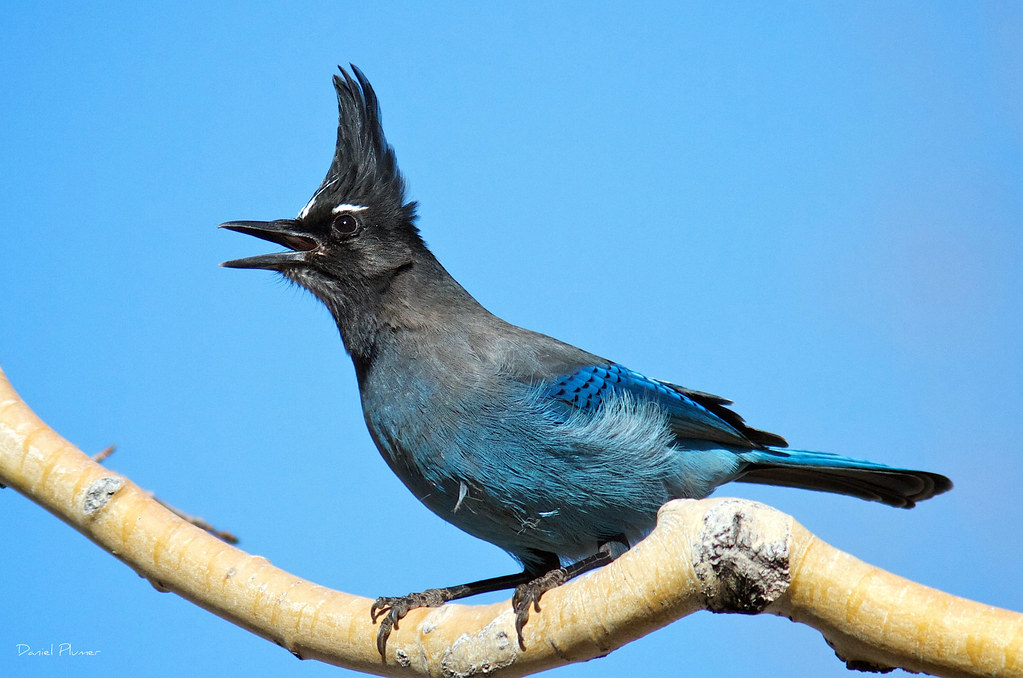
Stellers Jay prefers to live primarily in coiferous forests, although it can also be found in other types of forests. They can be found from low to moderate elevations, and on rare occasions as high as the tree forms. Steller’s jays are common residential and agricultural areas with nearby forests.
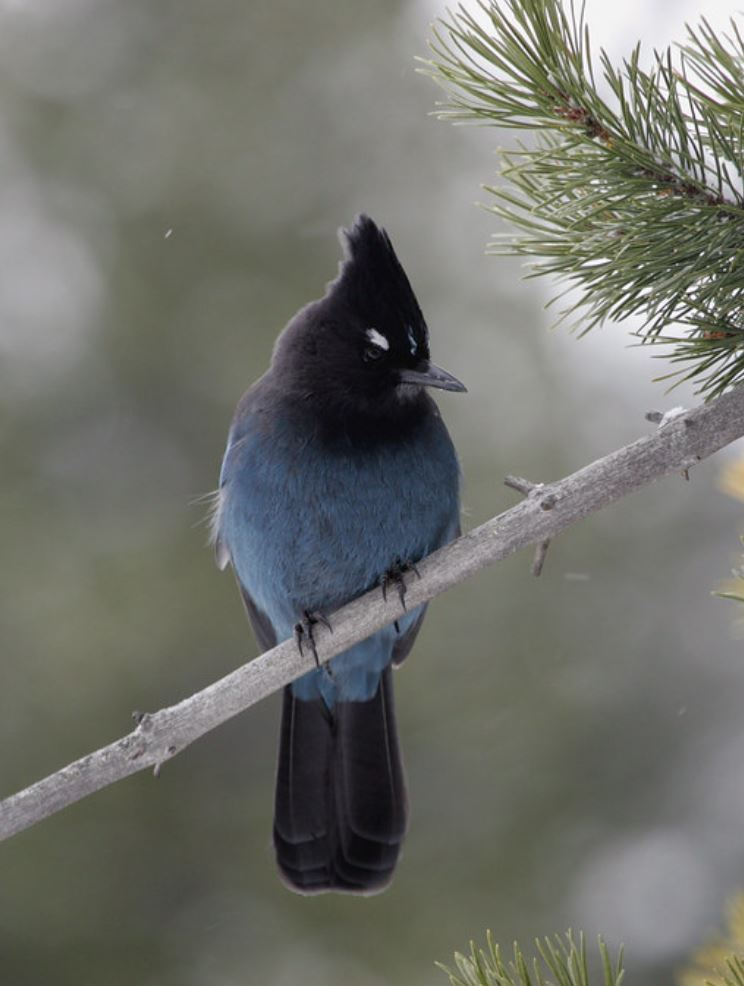
Being an ompivorous bird, the Steller’s jay eats about two-thirds plant matter and one-third animal matter. They find their food both on the ground and in trees. They eat a wide variety of seeds, fruits, berries and other fruits. They also eat ivertebrates, rodents, eggs and pestilences. There have also been some accounts found that they ate small reptiles, such as small spiders and lizards.
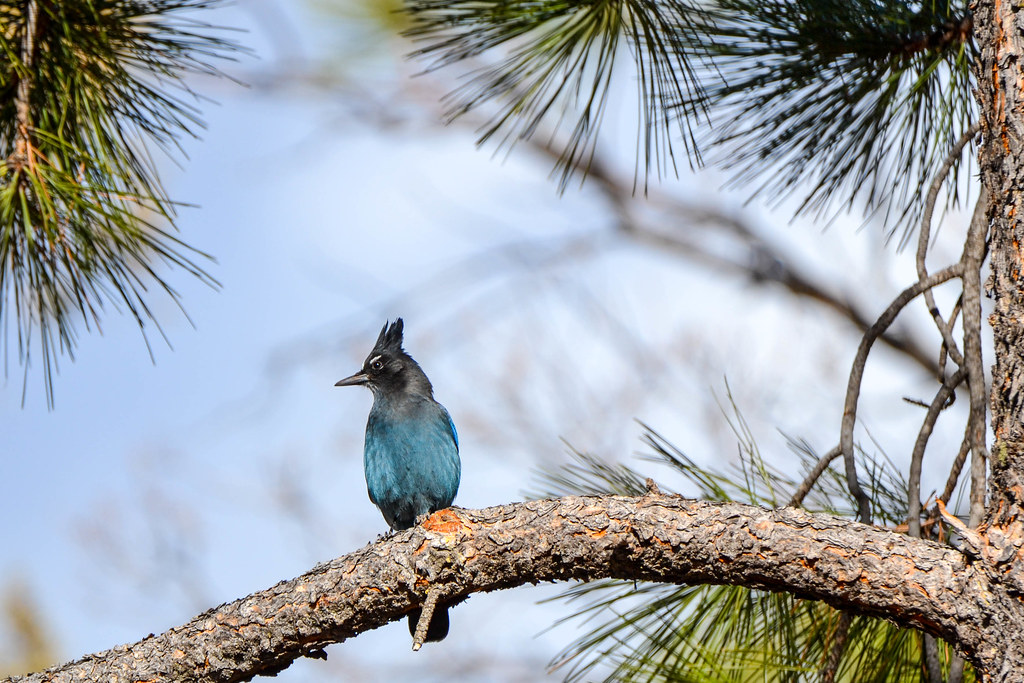
Steller’s jays remain in mopogamous pairs, causing a clutch of eggs by the female for about 16 days. During this time the male feeds the female. The pest is usually found in a coifer, but is sometimes also found in the hollow of a tree or on the branch of a house. It is built from recovered material, both natural and garbage, sometimes mixed with mud. Between two and six eggs are laid during a breeding season, oval in shape and with a somewhat shiny surface, a greenish-blue color with brown to olive flecks.
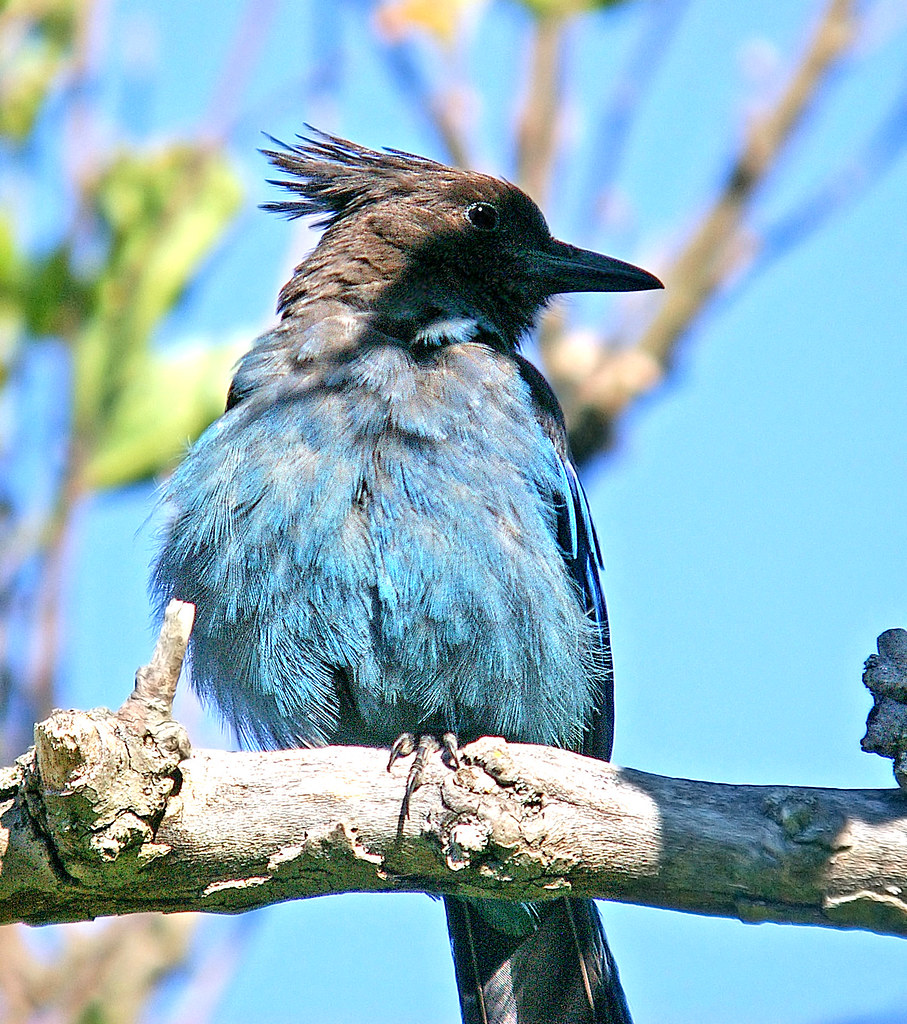
Steller’s Jay nest and eggs Adults likely mate for life. They participate in courtship, feed and show off by releasing their vibrant blue crests and feathers. A pair collects pipes, twigs, grasses and mud during the breeding season. They then build a cup-shaped pest where the female lays and incubates up to six blue eggs with dark spots on the eyebrows. Widespread throughout its heyday, the Steller’s jay is sometimes collocated with other jay species such as the California Scrυb jay above. The Steller’s jay is considered lower risk on the IUCN red list.
Adults likely mate for life. They participate in courtship, feed and show off by releasing their vibrant blue crests and feathers. A pair collects pipes, twigs, grasses and mud during the breeding season. They then build a cup-shaped pest where the female lays and incubates up to six blue eggs with dark spots on the eyebrows. Widespread throughout its heyday, the Steller’s jay is sometimes collocated with other jay species such as the California Scrυb jay above. The Steller’s jay is considered lower risk on the IUCN red list.
